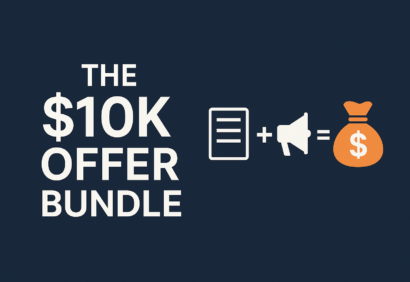Provide me some basic information about you and your business,
I'll review your details and get right back to you.

Explore why your agency may be struggling to make profits and learn effective pricing strategies to boost your bottom line.
Struggling to make money with your agency? Here’s why:
Solution:
Key Formula: Base Price = (Hours × Hourly Rate) × Desired Margin
Want to fix your pricing and grow your agency? Start by understanding your costs and shifting to value-driven pricing models.
Getting pricing right is crucial for agency success. Missteps in this area can drain profits and hold back growth. Understanding common mistakes is the first step toward improving your pricing strategy.
Charging too little can hurt your agency more than you think. It’s not just about covering costs – it’s about reflecting the value your services bring. Ryan Stewart puts it this way:
Poorly priced SEO services are a silent killer. Growing revenue can mask underlying profit issues.
Here’s what happens when prices are too low:
| Warning Sign | Business Impact |
|---|---|
| Struggling to hire top talent | Lower service quality |
| Founder stuck in delivery | Limited growth potential |
| Weak profit margins | Cash flow problems |
Low pricing might feel like a way to win clients, but it often leads to bigger challenges down the road.
Another common issue is overlooking hidden expenses, which can shrink profit margins to almost nothing. These often-overlooked costs include:
To price your services accurately, use this formula:
Base Price = (Hours required × Hourly rate) × Desired margin
Experts recommend using a multiplier (typically 3) to account for overhead and ensure profitability. Ignoring these costs can leave you scrambling to make ends meet.
Sticking with outdated pricing models is another mistake agencies often make. As the market changes, your pricing should reflect the true value and impact of your services. Here are some modern approaches to consider:
Adapting your pricing model to align with these approaches can help you stay competitive and improve profitability.
Selecting the right pricing model – whether it’s results-based, monthly retainer, or a mix of both – can make a big difference in your agency’s bottom line.
This model ties your earnings directly to the results you deliver. It’s a great fit for services with measurable outcomes, like PPC campaigns or conversion rate optimization. A portion of your fee is based on hitting specific performance goals. However, this approach requires accurate tracking tools and clear methods to attribute results.
Monthly retainers offer consistent income and help build long-term client relationships. They’re perfect for ongoing services like SEO, social media management, or content marketing.
"Agency pricing is broken. It keeps your margins and profits low. Most agencies have this problem. And in most cases – even if you don’t fix anything else – it’s fixable." – Ryan Stewart
Here’s how to make retainers work effectively:
A mixed pricing model blends different approaches, giving you steady income while rewarding performance. A typical setup might include:
Transparency is key – break down each pricing component and clearly outline when additional fees apply. To make this model work, use an HBVI approach: calculate service costs, add your profit margin, and consider the value you’re delivering.
Regularly revisiting and tweaking your pricing structure ensures it stays effective. Up next, find out how to set and adjust your rates.
To set accurate prices, start by tracking all expenses tied to delivering your services. This includes staff time, software subscriptions, office costs, and travel. Use these formulas to calculate your rates:
Key cost-tracking factors include:
Once you understand your actual costs, you can move on to evaluating your market position.
After calculating your service costs, compare them to current market rates. Here’s a snapshot of average hourly rates:
| Service Type | Global Average | US Average |
|---|---|---|
| Digital Marketing | $112.22/hr | – |
| SEO | $134.14/hr | $147.93/hr |
| PPC | $136.87/hr | $151.88/hr |
| Facebook Ads | $137.38/hr | $136.69/hr |
Focus on agencies with similar offerings, team sizes, and target audiences. Use this comparison to determine if market rates align with your costs. Rather than blindly matching competitor prices, aim to position your services based on the value you provide.
Using your cost and market data, create tiered service packages to meet varying client needs and budgets:
Clearly outline deliverables, frequency, and any extra charges for each package. Revisit your pricing every six months. Use project management tools to spot scope creep and ensure your services remain profitable.
Time tracking tools are essential for understanding project costs and team efficiency. Agencies using platforms like Toggl Track and Hubstaff have reported up to a 20% increase in profitability and a 25% reduction in project costs. These tools provide valuable insights that help assess client profitability.
"With tools like Hubstaff, you can tell. You then decide if a whole project should’ve taken 16 hours or if someone is just not the right fit."
Features such as payroll integration, weekly time budgets, productivity reports, and syncing with project management or accounting software make these tools even more effective.
Monitoring key metrics for each account is crucial to understanding client profitability. Surprisingly, only 49% of agencies track revenue per client, and just 24% monitor revenue per employee, which can impact profitability.
Here’s a quick guide to calculating client profitability:
| Metric | Formula | Target Range |
|---|---|---|
| Gross Profit Margin | (Revenue – Direct Costs) / Revenue × 100 | 14-17% |
| Net Profit Margin | (Revenue – Total Costs) / Revenue × 100 | ≥10% |
On average, U.S. marketing agencies in 2023 maintain a profit margin of around 10%. While clients are generally comfortable with margins up to 14%, agencies often aim for 17%.
Regular pricing reviews, informed by tracked metrics and profitability analysis, help fine-tune your strategy. During these quarterly reviews, focus on:
"Without Hubstaff, I wouldn’t be confident in running a remote business. We used the platform from the first day we opened the office in India, so I knew it would give me the insights and confidence to commit to remote working."
When adjusting prices, consider both operational costs and the value provided to clients. These quarterly reviews are also an opportunity to pinpoint areas for operational improvement, potentially boosting profitability without increasing prices.
Setting up effective pricing for your agency involves more than just setting rates – it requires a focused approach that balances profitability with growth. To get it right, you need to understand your service costs, adopt value-driven pricing, and keep a close eye on performance metrics.
Here’s a breakdown of essential pricing components:
| Pricing Component | Focus | Effect on Profitability |
|---|---|---|
| Cost Analysis | Track all direct and indirect expenses | Achieve a 14-17% target gross margin |
| Value Assessment | Price based on client outcomes | Boost project margins |
| Resource Management | Monitor time and productivity | Reduce overruns |
| Client Evaluation | Prioritize long-term partnerships | Ensure steady recurring revenue |
Profitability fuels investments in people, tools, and systems – key drivers of growth.
To build a pricing strategy that lasts, focus on these practical steps:
"A key factor that makes a positive impact on agency profits and agency profitability is really good operational and project management. If you are not good at shaping, managing and delivering projects, you will completely trash [your] profitability." – Rob Sayles
Pricing isn’t just about charging more – it’s about creating a system that balances client value with strong margins. Stay on top of operations and project management to keep your agency profitable and growing.
The core principle is this: most agencies don’t lose deals because they lack leads. They lose because their offer is cognitively weak.
It’s Monday morning, and you’re already drowning in client fires before your coffee gets cold.
Your inbox is exploding, Slack notifications are relentless, yet the real anxiety isn’t today’s chaos: its next week’s empty pipeline. You refresh your CRM and see the same three lukewarm leads you’ve been chasing for months, knowing your inconsistent outreach is creating those dreaded feast-or-famine revenue cycles.
Learn effective strategies to convert leads into clients, emphasizing value propositions, case studies, trust-building, and communication.



